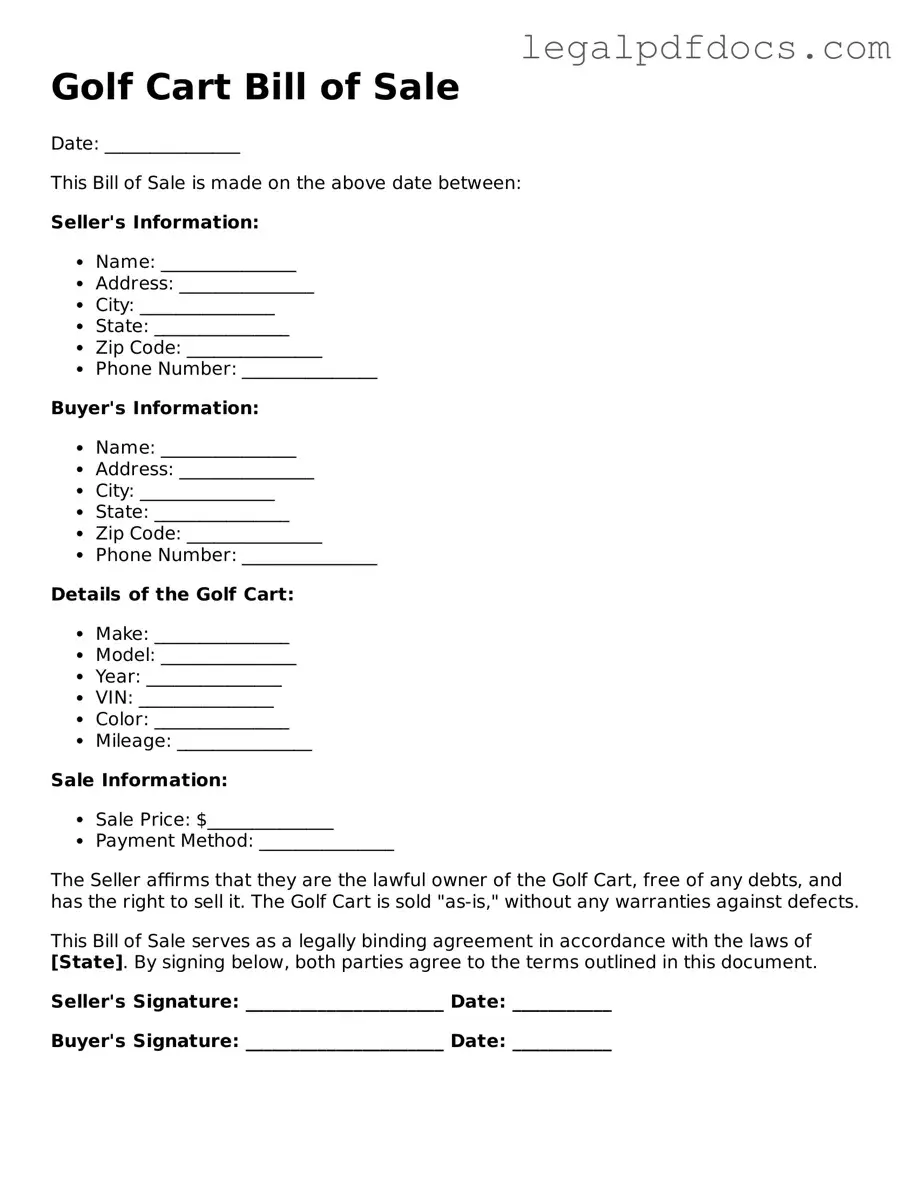Golf Cart Bill of Sale Template
A Golf Cart Bill of Sale is a legal document that records the transfer of ownership of a golf cart from one party to another. This form provides essential details such as the buyer's and seller's information, the cart's description, and the sale price. Completing this form ensures a smooth transaction and protects both parties involved.
To get started on your Golf Cart Bill of Sale, fill out the form by clicking the button below.
Open Golf Cart Bill of Sale Editor Here
